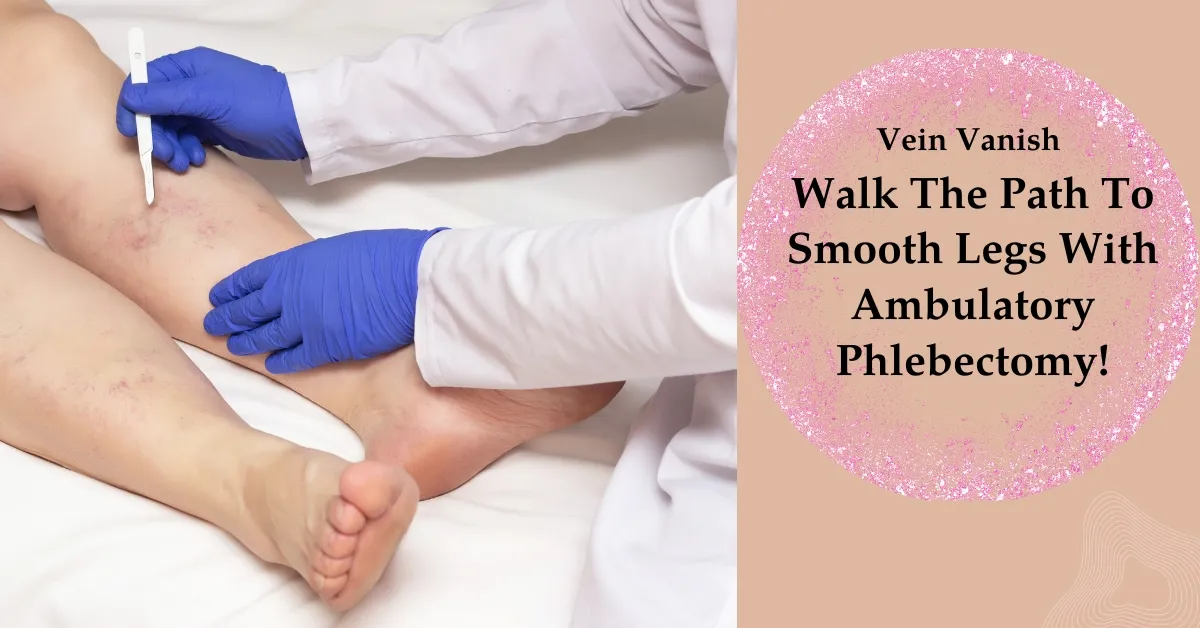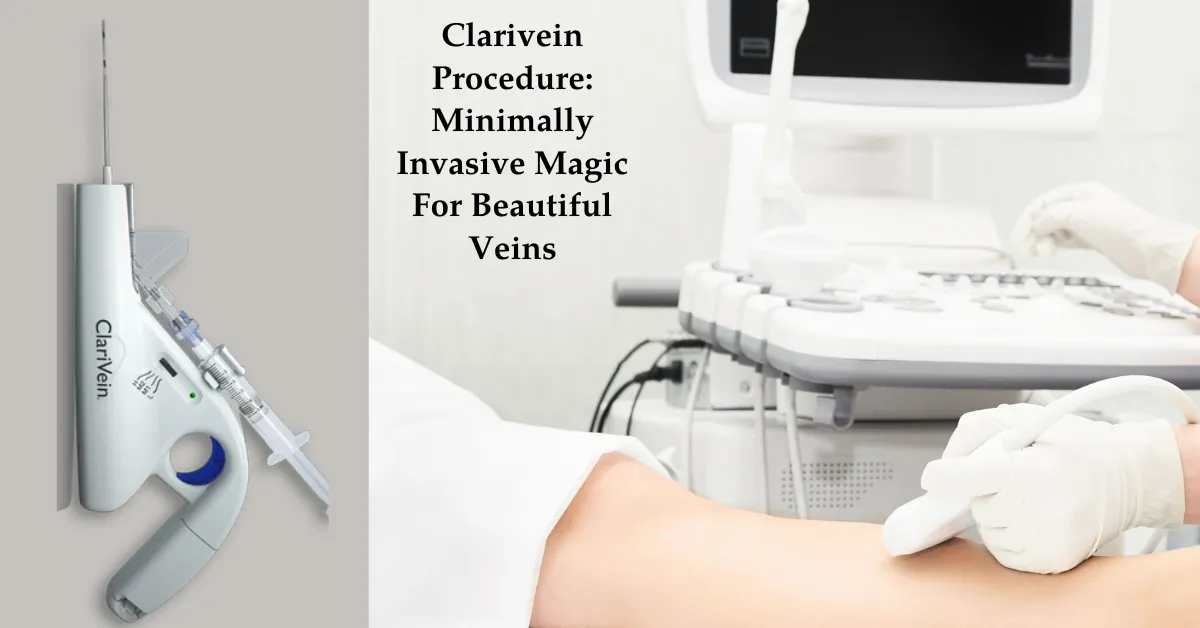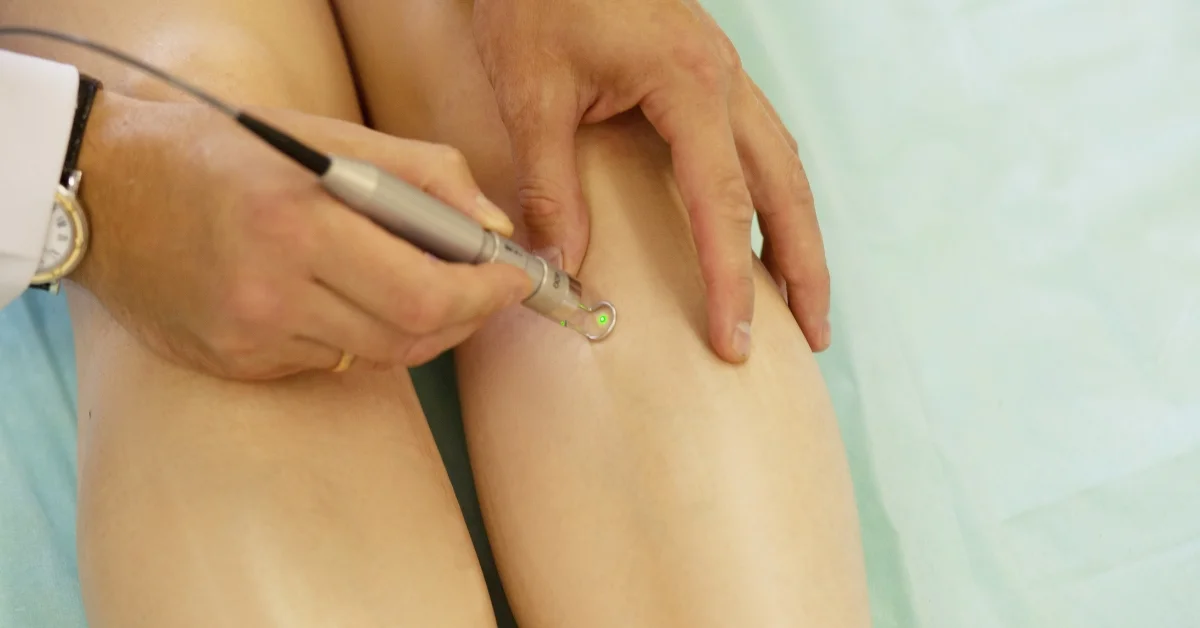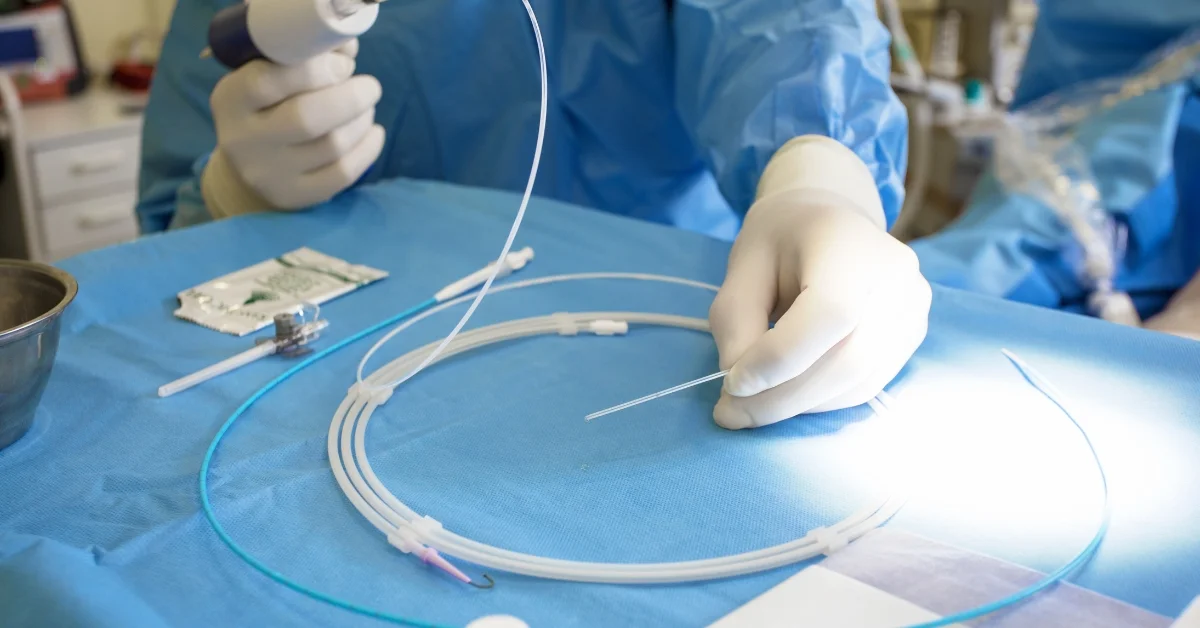If you’ve noticed prominent veins on your legs, you’re certainly not alone. Varicose veins affect a significant portion of the population, often causing both cosmetic and physical discomfort. But there’s good news. Advances in medical treatments offer effective solutions, and one such procedure stands out: Ambulatory Phlebectomy. This minimally invasive method is gaining traction for those seeking smoother legs.
Let’s explore what Ambulatory Phlebectomy entails and how it might benefit those seeking relief from varicose veins. Join us as we discuss its potential and delve into the path to healthier, more refined legs.
Ambulatory Phlebectomy: An Overview
Ambulatory phlebectomy, sometimes referred to as microphlebectomy, mini-phlebectomy, or stab avulsion procedure, is a renowned surgical method to treat superficial varicose veins. Originating from the word “ambulatory,” meaning to walk, this method is aptly named as patients can literally walk out of the clinic post-procedure.
Varicose veins are enlarged, twisted veins that often appear dark blue or purple. They occur when faulty valves in veins allow blood to flow backward or stagnate, enlarging the vein. This primarily affects the legs due to the pressure of body weight and the task of carrying blood up to the heart.
The main advantage of ambulatory phlebectomy over traditional methods is its minimally invasive approach. Traditional methods like vein stripping require larger incisions, general anesthesia, and longer recovery periods. Ambulatory phlebectomy, however, uses local anesthesia and involves removing the affected veins through small incisions. This often results in minimal scarring and reduced post-procedure pain.
This method is highly favored for veins that are too large for sclerotherapy (an injection-based treatment) but too small for more invasive surgeries. The best candidates for this procedure are those who have varicose veins close to the skin’s surface.
Despite its numerous advantages, it’s essential to understand that ambulatory phlebectomy is unsuitable for treating the underlying cause of varicose veins, like faulty valves deeper within the leg. It’s often combined with other treatments, such as endovenous laser treatment (EVLT), to address the root of the issue.
What To Expect During An Ambulatory Phlebectomy Procedure
If you’re considering ambulatory phlebectomy, it’s only natural to want a detailed breakdown of what the procedure entails. Knowledge can ease anxiety and help ensure you’re adequately prepared.
1. Consultation
This is the first step. Your physician will examine your veins, possibly using an ultrasound. This non-invasive tool provides a clear image of your veins, helping the doctor decide if phlebectomy is right for you.
2. Preparation
Before the procedure, avoid anti-inflammatory drugs and any medications that might thin your blood unless advised by your doctor. You’ll also be asked to wear loose-fitting clothing on the day of the procedure.
3. Procedure
Once in the operating room, the affected veins are marked while you’re standing. The area is then cleaned and numbed with local anesthesia. Small incisions, often no larger than 2-3mm, are made alongside the vein. A special set of tools is used to grasp and remove the vein segments through these incisions.
4. Duration
While the procedure’s duration varies based on the number of veins treated, most sessions are completed within 30 minutes to an hour.
5. Post-Procedure
After the veins are removed, the incisions are often so small that stitches aren’t required. Sterile dressings are applied, followed by compression stockings or bandages. These play a vital role in reducing swelling and enhancing skin adherence to the underlying tissue, promoting faster healing.
6. Recovery Room
Once the procedure is over, you’ll spend a short time in a recovery room. Most patients feel minimal discomfort, describing a tight or pulling sensation where the veins were removed. Pain relief, if needed, is usually managed with over-the-counter painkillers.
7. Heading Home
Ambulatory phlebectomy is an outpatient procedure. This means you can head home the same day, but ensure someone is there to drive you. Your mobility won’t be significantly hindered, but it’s always best to take precautions.
While the idea of having veins removed might sound daunting, modern techniques and tools have made ambulatory phlebectomy a straightforward, minimally invasive option. It offers both cosmetic and health benefits, alleviating the discomfort and appearance of varicose veins.
Benefits Of Ambulatory Phlebectomy Compared To Other Treatments
When it comes to treating varicose veins, there is no one-size-fits-all approach. Various treatments, from conservative measures like compression stockings to surgical interventions like vein stripping, exist. However, ambulatory phlebectomy stands out in the realm of minimally invasive cosmetic vein techniques. Here’s why:
1. Minimally Invasive Approach
Traditional vein stripping involves making large incisions and pulling out problematic veins from a considerable length, leading to extended recovery times and significant post-operative discomfort. Ambulatory phlebectomy, on the other hand, utilizes tiny incisions, causing less trauma to the surrounding tissue.
2. Local Anesthesia
Unlike some treatments that require general anesthesia, ambulatory phlebectomy can be performed under local anesthesia. This significantly reduces the risks associated with anesthesia and makes the procedure more accessible to those who might be wary of undergoing a full surgical experience.
3. Reduced Scarring
Due to the smaller incisions used in ambulatory phlebectomy, scarring is often minimal. Over time, these minuscule scars tend to fade, making them barely noticeable. This is a considerable advantage for individuals concerned about post-procedure aesthetics.
4. Swift Recovery
Given the procedure’s minimally invasive nature, recovery times are significantly shorter than more invasive surgeries. Many patients find themselves back to their routine within a couple of days, whereas traditional surgeries might require weeks of downtime.
5. Lower Risk of Complications
All medical procedures come with some risk. However, the risks associated with ambulatory phlebectomy are typically lower than those of more invasive treatments. Common complications like infections, deep vein thrombosis, or significant bleeding are less frequent with this method.
6. Immediate Results
With some treatments, it may take time before the full benefits become apparent. With ambulatory phlebectomy, the results are immediate. The troublesome veins are physically removed, leading to instant cosmetic improvement.
While each treatment for varicose veins has its place and indications, ambulatory phlebectomy provides a middle ground. It offers the immediacy of surgical intervention without the extensive recovery and higher risks associated with more invasive procedures.
Post-Procedure Care: Tips After Ambulatory Phlebectomy
Recovery from ambulatory phlebectomy is typically straightforward, but like any medical procedure, aftercare is crucial to ensure optimal results and prevent complications. Here are some essential tips:
- Compression Stockings: One of the most critical aspects of recovery is the use of compression stockings. These specialized garments help reduce swelling, enhance blood flow, and prevent clot formation. Your physician will advise on the duration and type of stocking to wear.
- Elevate the Legs: Especially during the first few days post-procedure, elevating the legs can help manage swelling and promote healing. Using pillows or a recliner to keep the legs raised above the heart level can be beneficial.
- Monitor for Signs of Infection: While rare, infections can occur. Keep an eye out for increasing redness, warmth, discharge, or if you develop a fever. If any of these symptoms arise, contact your healthcare provider.
- Limit Physical Activity: While you won’t be bedridden, it’s a good idea to avoid vigorous exercises or heavy lifting for the first week or so post-procedure. Walking, however, is encouraged, as it aids in circulation.
- Stay Hydrated: Hydration aids in the healing process and helps reduce the risk of blood clots. Drink ample water in the days following your procedure.
- Avoid Prolonged Standing: Standing for extended periods can exert pressure on the treated areas and might prolong recovery. Try to alternate periods of standing with sitting or lying down.
- Follow-Up Appointments: Don’t miss these! Your doctor will want to monitor your progress, ensure the treated veins are healing correctly, and check for any potential complications.
- Sun Protection: The treated areas might be more susceptible to sunburn or discoloration initially. If you’re exposing your legs to the sun, use a broad-spectrum sunscreen to protect the skin.
Complications And Risks Associated With Ambulatory Phlebectomy
- Infection: Potential entry point for bacteria at the incision sites leading to local infection.
- Bleeding and Hematoma: Possibility of bleeding from the incision sites, leading to a hematoma (a collection of blood in the wound).
- Scarring: Possibility of noticeable or keloid scars despite the procedure’s typical minimal scarring.
- Skin Pigmentation Changes: Brownish discolorations around the treated area, which can be temporary or, rarely, permanent.
- Nerve Damage: Risk of damage to small skin nerves, leading to sensations of numbness or tingling.
- Deep Vein Thrombosis (DVT): Rare risk of clot formation in the deeper veins of the leg.
- Recurrence of Varicose Veins: Potential for new varicose veins to develop in or around the treated area.
- Pain and Discomfort: Potential for pain or discomfort post-procedure.
- Swelling: Post-procedure swelling in the treated area.
- Allergic Reactions: Rare allergic reactions to local anesthesia or other materials used during the procedure.
- Phlebitis: Inflammation of a vein, potentially leading to redness, swelling, and discomfort.
- Delayed Healing: Wounds may take longer to heal, especially if post-operative care instructions aren’t followed.
Ambulatory Phlebectomy vs. Other Varicose Vein Treatments
There are several treatments for varicose veins, including laser therapy, sclerotherapy, and traditional vein stripping. While each method has its advantages, ambulatory phlebectomy offers immediate cosmetic results with fewer risks and faster recovery times than traditional vein stripping.
| Treatment Characteristics | Ambulatory Phlebectomy | Other Varicose Vein Treatments |
Description | Removal of veins through small incisions. | -Sclerotherapy: Injecting a chemical -EVLT/RFA: Heat via catheter to seal the vein -Vein Stripping: Surgical vein removal -Compression Therapy: Stockings |
Anesthesia | Local | -Sclerotherapy: None -EVLT/RFA: Local or sedation -Vein Stripping: General or spinal -Compression: None |
Recovery Time | Few days | -Sclerotherapy: Immediate -EVLT/RFA: Immediate with stocking use -Vein Stripping: 1-4 weeks -Compression: N/A |
Advantages | -Immediate results -Minimal scarring | –Sclerotherapy: Non-surgical, small veins -EVLT/RFA: Minimally invasive, large veins -Vein Stripping: Severe cases -Compression: Alleviates symptoms |
Limitations | Not for deep veins or root causes of varicose veins. | -Sclerotherapy: Not for large veins -EVLT/RFA: Potential side effects -Vein Stripping: More invasive -Compression: Doesn’t treat |
NOTE: The best treatment often depends on the size, location, and severity of the varicose veins, as well as patient preference, health, and lifestyle considerations. It’s crucial to consult with a vascular specialist to determine the most appropriate treatment option.
How To Prepare For Your Ambulatory Phlebectomy Surgery
1. Consultation
- Meet with your vascular surgeon or phlebologist to discuss the procedure, risks, and benefits.
- Ask any questions you may have to ensure you fully understand the process.
2. Medication Review
- Discuss current medications, supplements, and over-the-counter drugs you’re taking.
- You might need to stop certain medications, such as blood thinners, a few days before the procedure.
3. Avoid Aspirin and NSAIDs
- These can increase the risk of bleeding, so you may be advised to stop taking them a week or so before surgery.
4. Skincare
- Do not apply lotions, creams, or oils to the legs on the day of the procedure.
- Shower and clean the area to reduce the risk of infection.
5. Clothing
- Wear loose, comfortable clothing on the day of the procedure.
- Bring compression stockings if you’ve been advised to wear them post-procedure.
6. Eating and Drinking
- Typically, you can eat a light meal before the procedure.
- Stay hydrated, but avoid excessive amounts of fluids right before to avoid frequent restroom visits.
7. Transportation
- Arrange for someone to drive you home post-procedure, especially if sedatives are used.
8. Avoid Tobacco and Alcohol
- Refrain from smoking or consuming alcohol 24 hours before the surgery, as they can interfere with anesthesia and the healing process.
9. Stay Informed
- Familiarize yourself with post-procedure care so you can prepare your home accordingly (e.g., having a comfortable resting place, necessary medications, etc.)
10. Gather Supplies
- Based on your doctor’s advice, you might want to have on hand:
- Pain relief medication (as recommended)
- Ice packs for swelling
- Gauze or bandages for any oozing from incision sites
11. Get a Good Night’s Sleep
- Ensure you’re well-rested before the procedure to aid recovery.
Following these preparation steps will help ensure a smoother process and a quicker recovery post-ambulatory phlebectomy. Always follow the specific advice and instructions given by your healthcare provider.
Ambulatory Phlebectomy Treatment Cost
Ambulatory phlebectomy is a procedure to remove varicose veins. Its cost varies based on:
- Location: Urban areas may charge more than rural ones.
- Surgeon’s Experience: Seasoned surgeons might have higher fees.
- Facility Type: Prices differ between private clinics and hospitals.
- Vein Conditions: More or larger veins can raise the cost.
- Insurance: Coverage can impact out-of-pocket expenses.
- Additional Costs: Includes consultations, post-treatment, and medications.
The cost may range anywhere from $2000 to $5000; however, these figures might vary. It’s best to check with local experts for up-to-date costs.
Latest Advances In Ambulatory Phlebectomy Techniques
Ambulatory phlebectomy has been a tried-and-true method for removing varicose veins for several decades. However, like many medical procedures, it continues to benefit from incremental improvements in technique, technology, and patient care. Here are some of the advances that were emerging or taking hold up until that time:
- Improved Anesthesia: Use of tumescent anesthesia for effective pain control and reduced bleeding.
- Enhanced Visualization: Adoption of devices like vein illuminators for better vein targeting.
- Minimized Incisions: Reduced size and number of incisions leading to quicker recoveries and minimal scarring.
- Optimized Post-Operative Care: Better understanding and practices for post-surgery care, such as using compression stockings.
- Combination Treatments: Merging ambulatory phlebectomy with other treatments like EVLT or RFA for comprehensive vein care.
- Specialized Training: Emphasis on accreditation and specialized training for practitioners.
- Patient Comfort: Innovations in surgical environments to reduce patient anxiety and improve experience.
- Research on Outcomes: Ongoing studies into the long-term efficacy of the procedure.
- Advanced Surgical Tools: Introduction of precision tools for efficient vein removal.
- Personalized Assessments: Tailored treatment plans using advanced imaging and analytics.
Stab Avulsions: A Step Towards Smoothness
The journey to smoother, more refined legs is now more attainable than ever before. Ambulatory Phlebectomy has proven to be a trusted and minimally invasive solution to address the challenges posed by varicose veins. Not only does it offer cosmetic improvements, but it also alleviates the physical discomfort many experience.
As with any medical procedure, it’s crucial to consult with a qualified specialist to determine the best course of action for your individual needs. With the right approach, you can confidently stride forward, embracing both the aesthetic and health benefits that come with vein-free legs.
References
https://www.sciencedirect.com/topics/medicine-and-dentistry/ambulatory-phlebectomy
https://www.mercy.com/health-care-services/heart-vascular/treatments/ambulatory-phlebectomy
https://www.asds.net/skin-experts/skin-treatments/ambulatory-phlebectomy-for-varicose-veins
https://www.theveininstitute.com.au/does-ambulatory-phlebectomy-hurt









